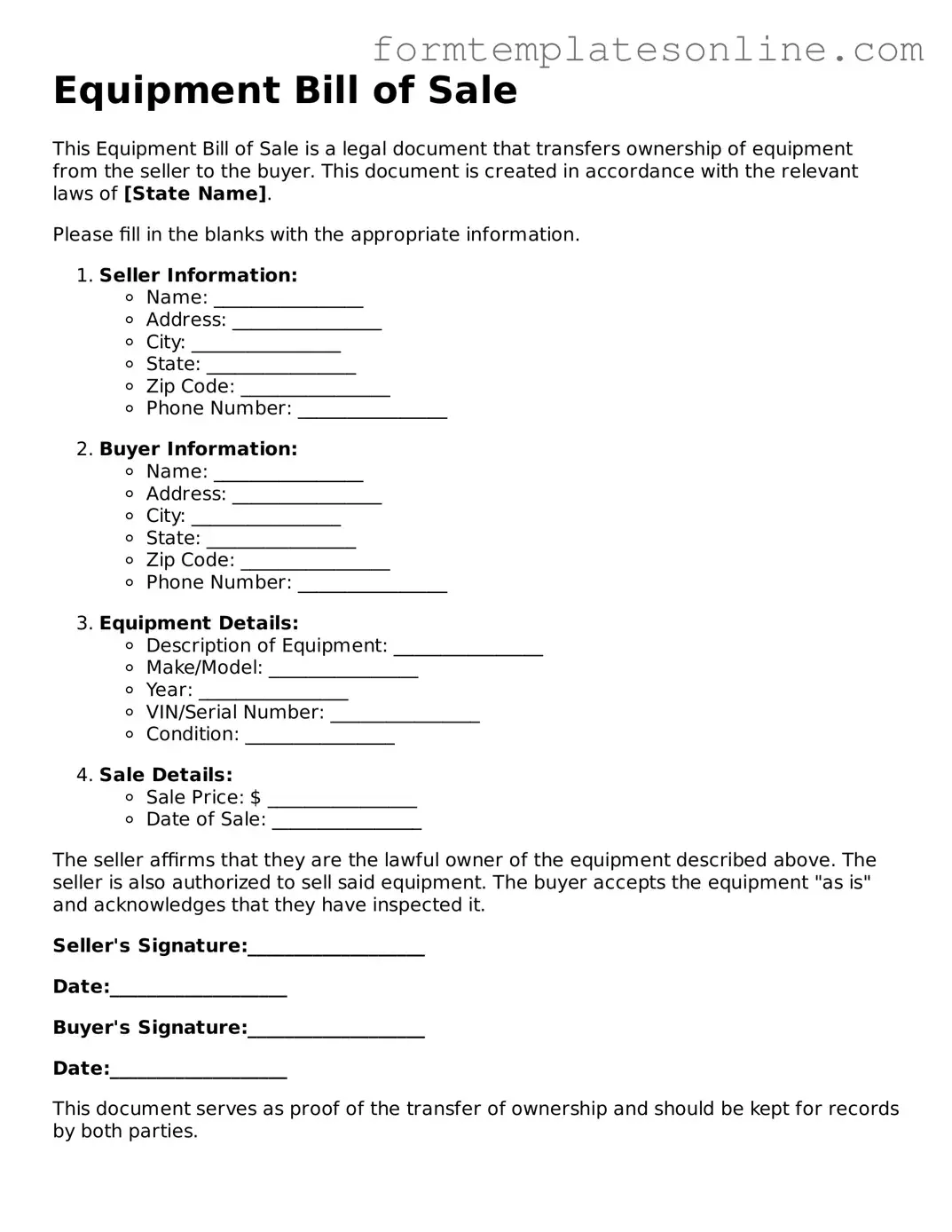What is an Equipment Bill of Sale form?
An Equipment Bill of Sale form is a legal document that records the sale of equipment from one party to another. It serves as proof of the transaction and outlines the details of the sale, including the description of the equipment, sale price, and the names of both the buyer and seller. This form is crucial for both parties as it helps protect their rights and provides a clear record of ownership transfer.
Why is it important to use an Equipment Bill of Sale?
Using an Equipment Bill of Sale is essential for several reasons. First, it provides legal protection for both the buyer and seller by documenting the terms of the sale. Second, it can be used for tax purposes, as it may be required to prove ownership and the value of the equipment. Lastly, it helps prevent disputes by clearly outlining the responsibilities and expectations of both parties involved in the transaction.
What information should be included in the Equipment Bill of Sale?
The Equipment Bill of Sale should include specific information to ensure its validity. Key details include the names and addresses of both the buyer and seller, a detailed description of the equipment (including make, model, and serial number), the sale price, and the date of the transaction. Additionally, any warranties or conditions related to the sale should be documented. This comprehensive information helps prevent misunderstandings and ensures clarity for both parties.
Do I need to have the Equipment Bill of Sale notarized?
Notarization of the Equipment Bill of Sale is not always required, but it is often recommended. Having the document notarized adds an extra layer of authenticity and can help prevent future disputes regarding the sale. Some states may have specific requirements regarding notarization, so it’s advisable to check local regulations to ensure compliance.
Can the Equipment Bill of Sale be modified after signing?
Once the Equipment Bill of Sale is signed by both parties, it is generally considered a binding agreement. Modifications should be avoided unless absolutely necessary. If changes are needed, both parties must agree to the modifications and sign an amended document. This ensures that all parties are aware of the changes and agree to the new terms, maintaining the integrity of the original agreement.
